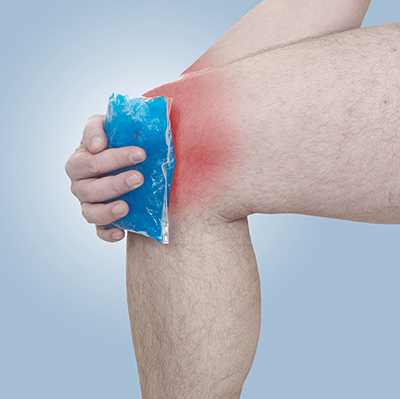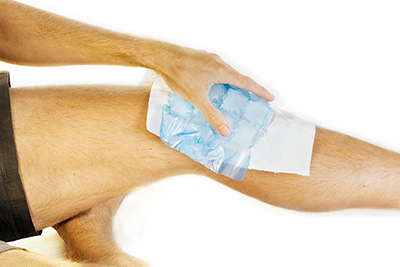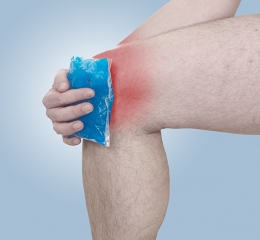
As summer approaches, and we change our activities from skiing, snowboarding and snowshoeing to hiking, running, swimming and biking, the risks of acute (sudden) sprains (ligament tear) and strains (muscle/tendon tear) rises. A ligament connects a bone to a bone. A tendon connects a muscle to a bone. Both a sprain and strain can be either microscopic tearing (Grade I) or full thickness tearing (Grade III). The initial approach to self-treatment, regardless if you are dealing with a Grade I sprain or a Grade III strain, is the same.
If you do sustain a sprain or a strain, there a couple of early interventions that you can employ to accelerate and improve your recovery. The old acronym of R.I.C.E. still applies. At the highest levels of sports (NFL, NHL, NBA, MLB, MLS, NCAA), this what the professionals do.
Rest. It is important to dial back your activities while still being ambulatory. Take the stress off of the injured ligament or tendon for a brief period. This does not mean being sedentary. Use crutches if your injury is to your lower extremity to get around without stressing the injured ligament or tendon further. Keep the blood flowing while allowing your body to heal itself. A brace, at the direction of a physician, can be helpful in augmenting stability.
Ice. Apply ice to the injured area. Three times a day for 20 minutes is a good place to start. Twenty minutes on and then twenty minutes off can also be effective. This reduces swelling and inflammation. Caution must be taken to avoid a skin burn. Place a layer of fabric between the ice and the skin. Monitor closely.
Compression. Apply compression to address swelling. This will accelerate recovery and improve pain. I prefer sleeves to wraps. Sleeves provide more uniform compression without the risk of cutting off blood flow. These can be picked up at most pharmacies or sporting good stores.
Finally, elevation. Elevate the injured body part to decrease swelling. The injured body part must be above the heart in order for the fluid in the area to drain back to the body.

An additional treatment that reduces pain and accelerates recovery is the use of anti-inflammatory medications. These medications are available over-the-counter. They can be taken as instructed on the bottle unless otherwise directed by a physician.
If you think that you have a sprain or strain, it is a good idea to be evaluated by a physician to rule out a broken bone or a complete rupture of a ligament, tendon or muscle that might require advanced diagnostics or treatment. If you have been diagnosed with a sprain or strain, make sure to R.I.C.E. to improve your chance at a successful and expedient outcome.
The content found herein is not intended to be a substitute for professional medical advice, diagnosis, or treatment. Always seek the advice of your physician or other qualified health provider with any questions you may have regarding a medical condition. Never disregard professional medical advice or delay in seeking it because of something you have read here.





